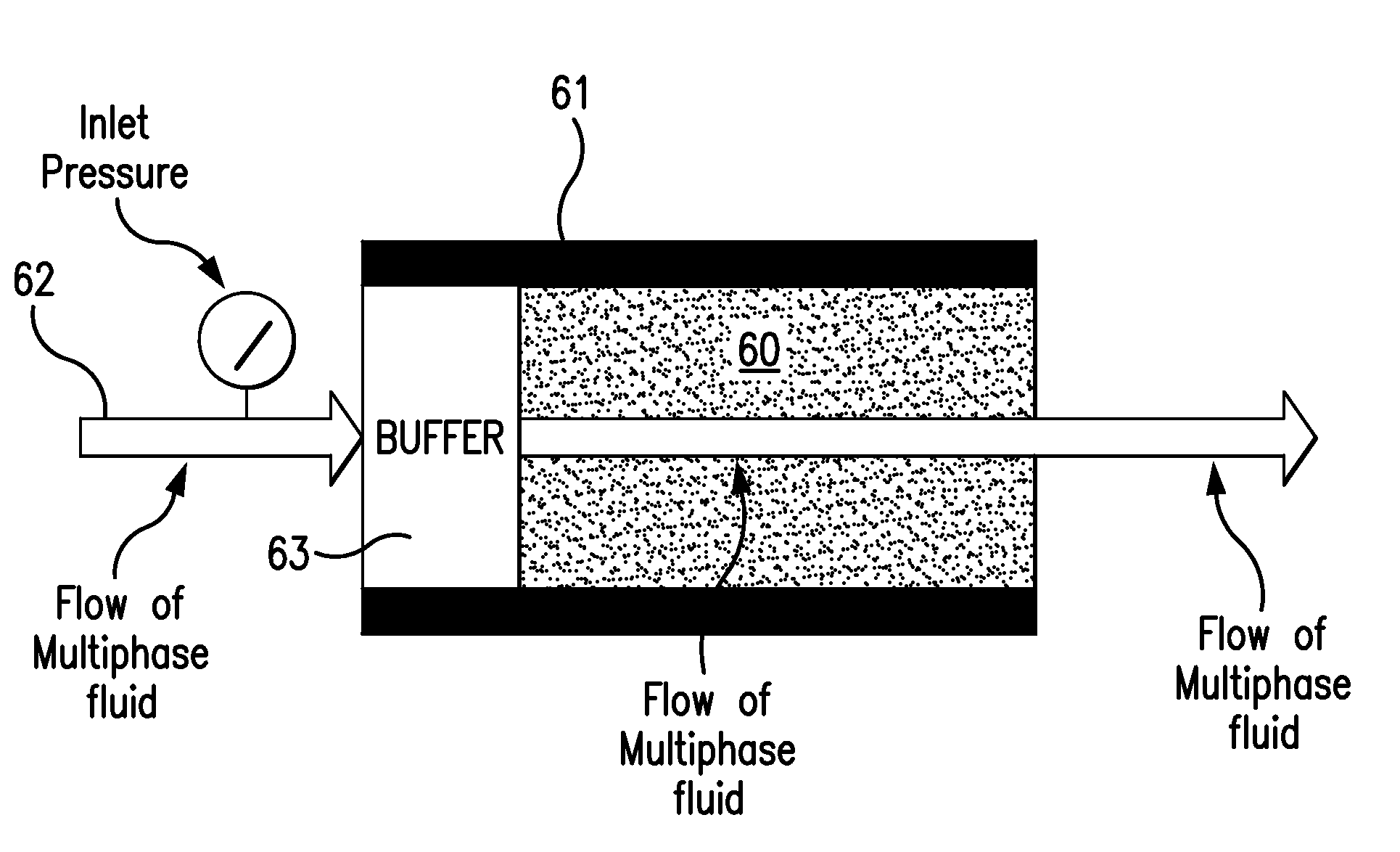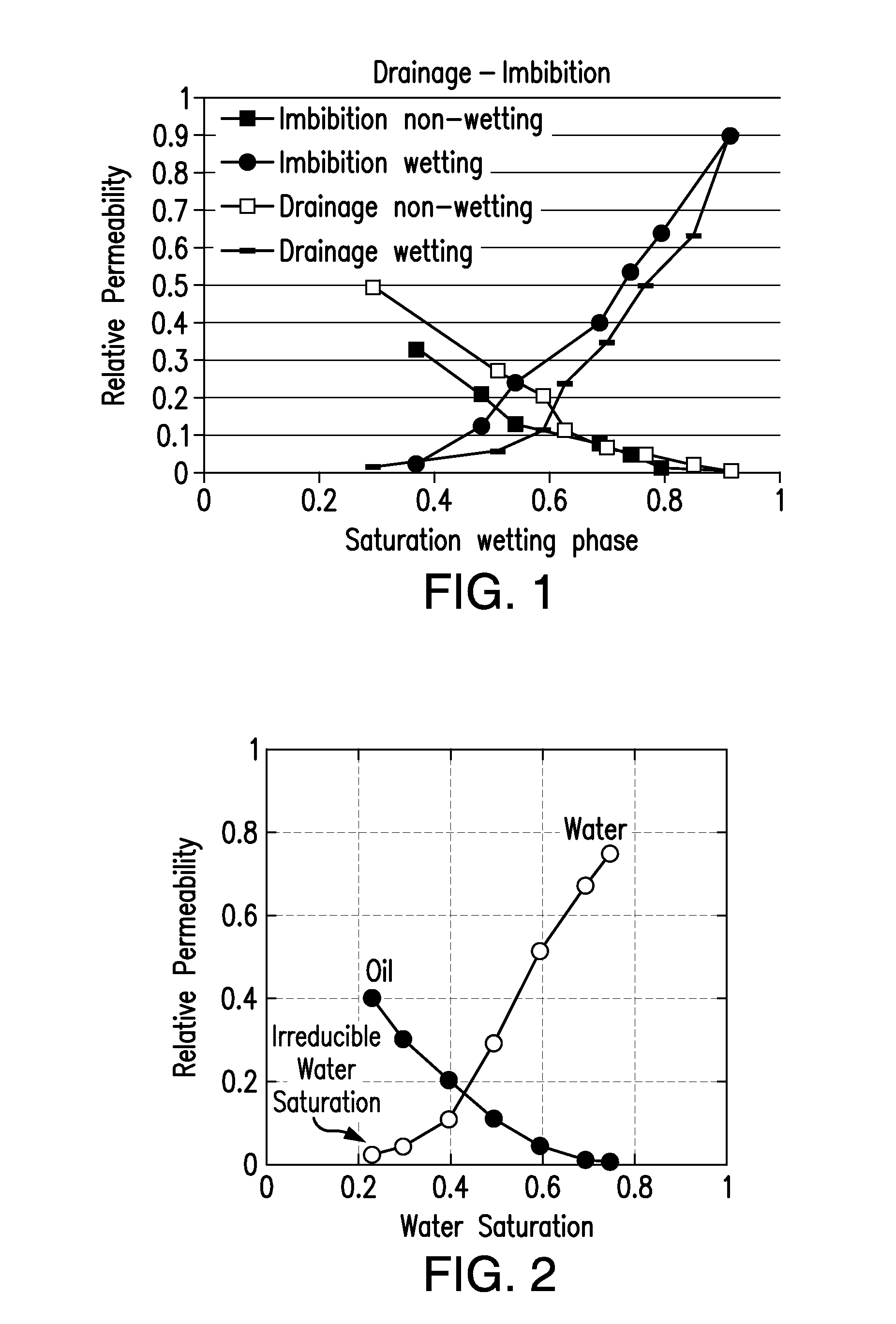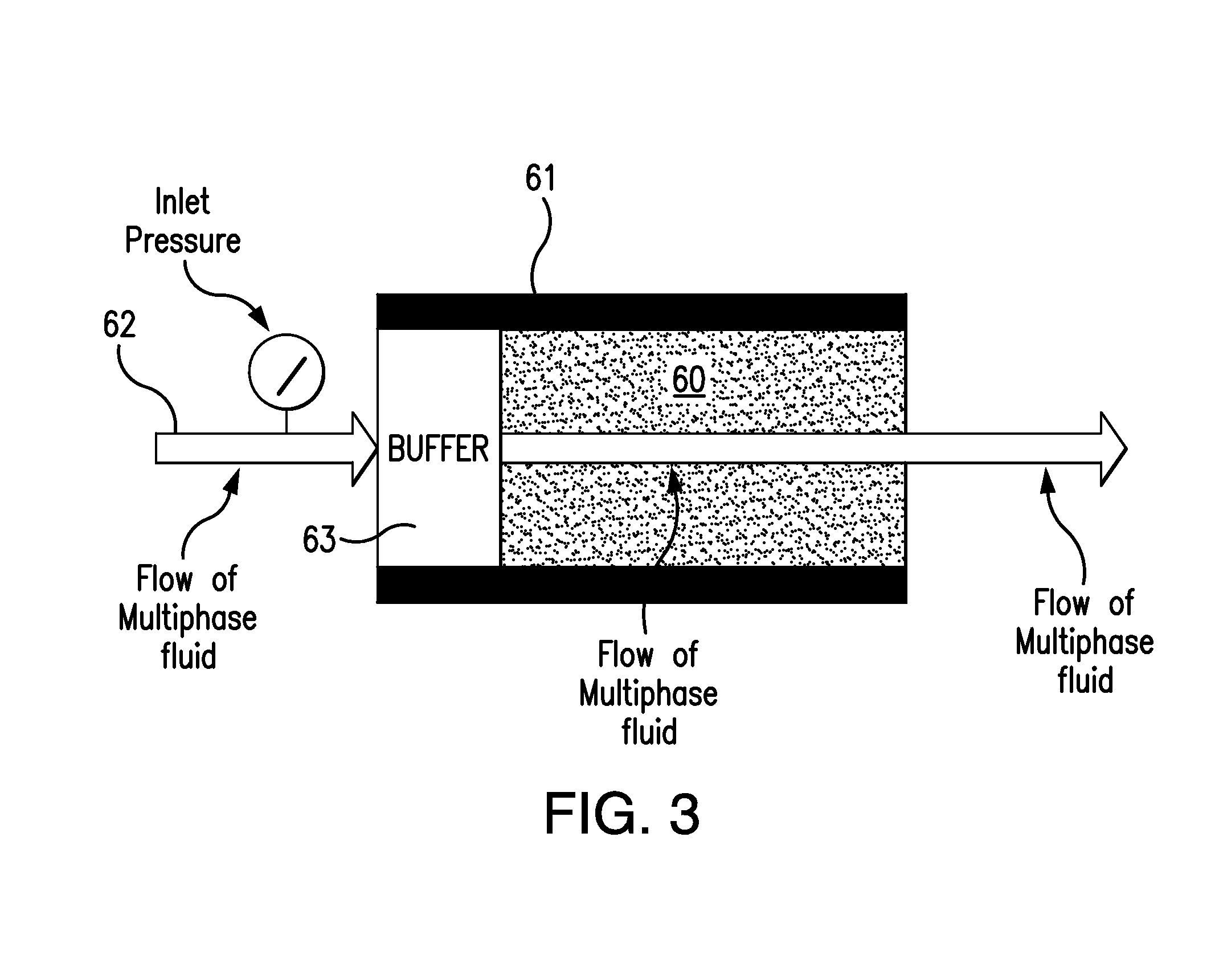Method For Simulating Fractional Multi-Phase/Multi-Component Flow Through Porous Media
a multi-phase/multi-component fluid flow and fractional technology, applied in the direction of instruments, cad techniques, analogue processes for specific applications, etc., can solve the problems of equipment malfunction, leakage problems and/or equipment malfunction, and other materials may not have effective contact with solid materials, etc., to achieve improved evaluations and estimates.
- Summary
- Abstract
- Description
- Claims
- Application Information
AI Technical Summary
Benefits of technology
Problems solved by technology
Method used
Image
Examples
example 1
[0201]A sample of a carbonate rock was selected for analysis using a representative method of the present invention. The sample plug was weighed (125.299 g), physically measured for its diameter and length, and photographed. The plug was marked for orientation and placed in oven to dry and weighed again (124.447 g).
[0202]The plug was imaged on a MicroXCT-200 manufactured by Xradia at a resolution of 0.5×, at approximately 40 microns (pm) per voxel. The plug was scanned with the Ceretom Dual Energy X-Ray CT Scanner manufactured by Neurologica to determine bulk density and atomic number. A sub-sampling location was selected that showed typical atomic number. Areas with high atomic number were avoided.
[0203]A laser was used to mill out a 4 mm diameter pillar from the carbonate sample (see the square region indicated in FIG. 10). The square region in FIG. 10 is the area of the carbonate sample selected for further analysis. The selected sub-sample was imaged on the MicroXCT-200 scanner ...
PUM
 Login to View More
Login to View More Abstract
Description
Claims
Application Information
 Login to View More
Login to View More - R&D
- Intellectual Property
- Life Sciences
- Materials
- Tech Scout
- Unparalleled Data Quality
- Higher Quality Content
- 60% Fewer Hallucinations
Browse by: Latest US Patents, China's latest patents, Technical Efficacy Thesaurus, Application Domain, Technology Topic, Popular Technical Reports.
© 2025 PatSnap. All rights reserved.Legal|Privacy policy|Modern Slavery Act Transparency Statement|Sitemap|About US| Contact US: help@patsnap.com



